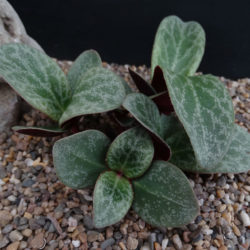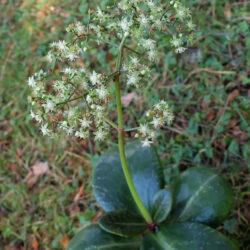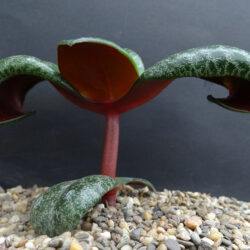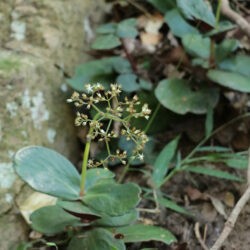Scientific Name
Crassula streyi Toelken
Common Name(s)
Pondo Cliff Crassula, Pondoland Crassula
Synonym(s)
Septimia streyi
Scientific Classification
Family: Crassulaceae
Subfamily: Crassuloideae
Genus: Crassula
Description
Crassula streyi is a small, sparingly branched succulent with reddish, decumbent to erect branches and attractive dark green leaves with light spots mainly along veins and a stunning claret color on the undersides. The branches can grow up to 12 inches (30 cm) long (without inflorescence) and 0.4 inches (1 cm) in diameter, often sprawling and sprouting roots. The leaves are flat, elliptic, slightly recurved, without leaf stalks, and measure up to 2.6 inches (605 cm) long and 1.6 inches (4 cm) wide. The color on the undersides of the leaves is most intense when the plant is grown in shade.
The flowers are star-shaped, 4- or 5-merous, greenish-white to yellowish-green with a red central vein on the outside. They appear in a rounded or slightly elongated thyrse with several dichasia from late fall to mid-winter. The dehiscent fruits are follicles with seeds spontaneously released and dispersed by wind.
Crassula streyi is related to Crassula multicava but is distinguished by its less vigorous nature and larger, mottled leaves. Crassula multicava is often wrongly sold as Crassula streyi.
Origin
Crassula streyi is native to South Africa. It grows in shallow soil among leaf litter on shady rocky ledges, often in the shade of cliff-dwelling shrubs in southern KwaZulu-Natal and into the adjacent northern Eastern Cape at elevations from 165 to 820 feet (50 to 250 m).
Etymology
The specific epithet "streyi (STREE-eye)" honors Rudolf Georg Strey (1907–1988), a German farmer and botanist, curator of the Natal Herbarium and scientist at the National Botanical Research Institute in Durban, who first collected this species near Port Edward in 1963.
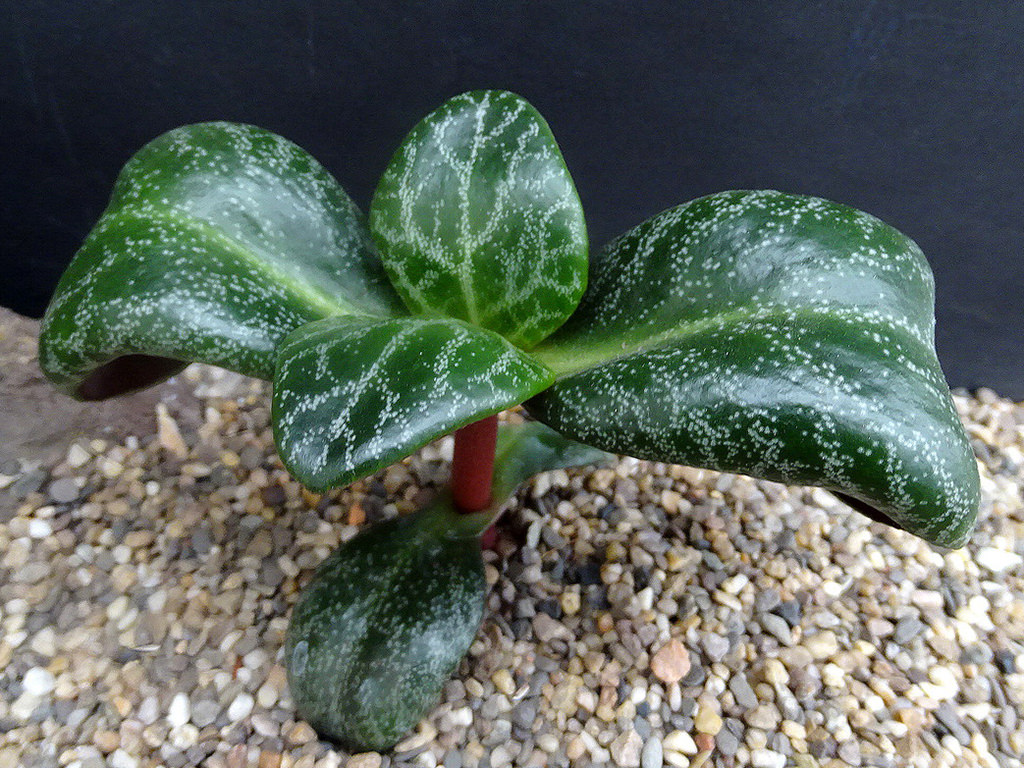
Hardiness
USDA hardiness zone 10b to 11b: from 35 °F (+1.7 °C) to 50 °F (+10 °C).
How to Grow and Care
Crassulas are easy to grow but susceptible to mealy bugs and fungal diseases. Overwatering is sure to be fatal, as with all succulents, so err on the side of too dry rather than too wet. Never let your Crassula sit in water. If you water from beneath by letting the plant sit in a saucer of water, ensure to pour off any excess water after a few minutes.
Crassulas are generally started by division, offsets, or leaf cuttings. Plants can be easily propagated from a single leaf: sprout leaves by placing them into a succulent or cacti mix, then covering the dish until they sprout.
Repot as needed, preferably during the warm season. To repot a succulent, ensure the soil is dry before repotting, then gently remove the pot. Knock away the old soil from the roots, removing any rotted or dead roots. Treat any cuts with a fungicide. Place the plant in its new pot and backfill it with potting soil, spreading the roots as you repot. Leave the plant dry for a week or so, then begin to water lightly to reduce the risk of root rot.
See more at How to Grow and Care for Crassula.
Links
- Back to genus Crassula
- Succupedia: Browse succulents by Scientific Name, Common Name, Genus, Family, USDA Hardiness Zone, Origin, or cacti by Genus
Photo Gallery
Click on a photo to see a larger version.
